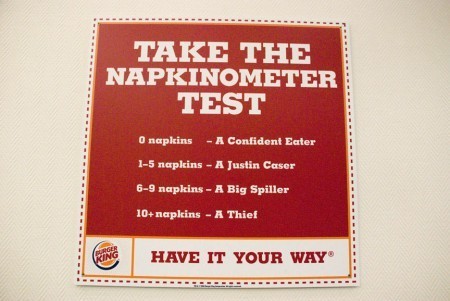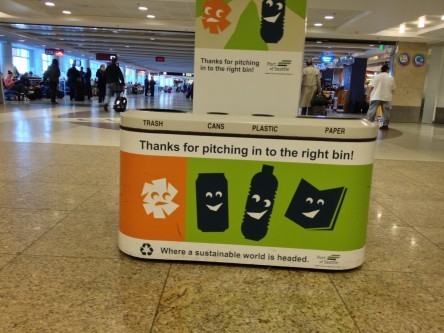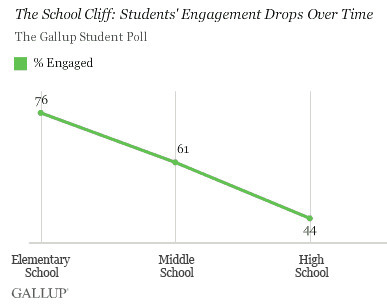Daniel H. Pink's Blog, page 3
February 1, 2013
Should phone calls have subject lines?
From the Department of Why the Heck Didn’t I Think of That? comes SayWhat, a new Android app that “lets you introduce the subject of your call, set the mood and check the availability of the person you’re calling before or while placing the call.”
Check out the 1-minute video below. Then spend at least 3 minutes afterwards kicking yourself with regret at not being as swift and creative as these Israeli entrepreneurs.
(HT: Springwise. Of course.)
January 30, 2013
Why it pays to be an ambivert. (And why you probably are one.)
This is my favorite chart from To Sell is Human, one that I explain in greater detail in a new Washington Post column.
Here’s what it means and why it matters.
This summer Adam Grant, the youngest tenured professor at the Wharton School of the University of Pennsylvania, conducted a study that explodes the myth of the extraverted sales star. He examined a software company with a large sales staff, assessed where each salesperson stood on a 1 to 7 introversion/extraversion scale, and then charted how much they sold over the next three months.
His findings: The strong introverts (the people represented on the left of the chart’s horizontal axis, around 1 and 2) weren’t very effective salespeople. No surprise there. But the strong extraverts (those over to the right, around 6 and 7) weren’t much better. As you can see from the chart, the folks who fared the best — by a wide margin — were the in the modulated middle. They’re called “ambiverts,” a term that has been in the literature since the 1920s. They’re not overly extraverted. They’re not overly introverted. They’re a little of both.
In sales, leadership, and perhaps other endeavors, ambiverts have an advantage. And as I spell out in the Post, the odds are pretty good that you’re an ambivert yourself. Intrigued? Test your own ambiversion here and read more about how to develop this quality in Chapter 4 of the book.
January 28, 2013
Emotionally intelligent signage meets fast food meets eco-sustainability
It’s the question that has vexed philosophers and statesmen since the time of Cicero: Can emotionally intelligent signage reduce napkin use in fast food restaurants?
Now Burger King restaurants are working on an answer with emotionally intelligent messages printed directly on the napkins themselves.
(Thanks to Joseph Hrycak and NudgeBlog for this example)
January 22, 2013
How to sell to the man in the chair
Matthew May sends this vintage (1958) award-winning ad for McGraw-Hill, which even today offers a smart and tart reminder for all of us trying move others.
January 21, 2013
Who’s more honest — Congresspeople or salespeople?
According to Gallup, the verdict is mixed. In a December poll, the venerable research company found that the only people held in lower ethical esteem than members of Congress were sellers of cars. But insurance salespeople managed to trump both Senators and ad executives. Read more here.
January 15, 2013
Do pitches that rhyme belong on a sign?
Chapter 7 of To Sell is Human explores the art and science of pitching — the ability to distill one’s point to its persuasive essence. Along the way I show why we need to move beyond the elevator pitch and why the social science says we should pitch with questions and even rhymes.
But I never expected the question pitch and the rhyming pitch to cross paths with the age-old (for this blog) topic of emotionally intelligent signage.
Then I went to the Seattle airport a few days ago and saw this rhyming pitch for waste disposal.
The following day, Derek Coburn sent this photo, which shows a question pitch on a Washington, DC, bus stop.
Is this a thing? Do pitches that rhyme belong on a sign?
* * * * *
IN OTHER NEWS . . .
The TSIH Book Tour heads toward Southern California tomorrow. Here’s what’s on tap if you’d like to join us:
Irvine: Linked Orange County (Weds. 1/16 at 630pm)
Los Angeles: Live Talks LA (Thurs. 1/17 at 745am)
Santa Monica: Think LA/Live Talks LA (Thurs. 1/17 at 7pm)
January 14, 2013
The secret to feeling like you have more time
Here’s a great 3-minute video about the powerful but often overlooked emotion of awe. Stanford PhD candidate Melanie Rudd explains what awe is and why it can help us feel more “time affluent.”(For more, check out Rudd’s paper, written with Kathleen Vohs and Jennifer Aaker.)
January 7, 2013
Does the “school cliff” matter more than the fiscal cliff?
For all the yammering about the fiscal cliff, another cliff might present a more perilous danger — what the folks at Gallup call the “school cliff.”
Never heard of that one?
Take a look at chart below — and you’ll grok it immediately.
As this Gallup blog post explains: “[Our] research strongly suggests that the longer students stay in school, the less engaged they become.” Primary school kids begin their educations deeply engaged — but by the time they get to high school, more than half are checked out. And the problem is even worse for our most entrepreneurial students.
Brandon Busteed, Executive Director of Gallup Education, points to several factors for the decline. An “overzealous focus on standardized testing.” Not enough project-based or experiential learning. Too few pathways for students who won’t, or don’t want to, attend college.
But whatever the reasons, he says, “The drop in student engagement for each year students are in school is our monumental, collective national failure.”
* * * * *
IN OTHER NEWS . . .
The To Sell Is Human Book Tour begins this week. Here are 3 events you might enjoy:
Washington DC: Politics and Prose, Tuesday January 8 at 7pm
Seattle: Town Hall Seattle, Wednesday January 9 at 730pm
Portland: Powell’s Books, Friday January 11 at 730pm
January 1, 2013
The perfect 4-minute film to start your new year
Check out this amazing short film — about one man’s quest to make a city smile — which premiered today. If it doesn’t make your day, I’ll give you your money back. (Full disclosure: I know the filmmaker).
December 31, 2012
A new book for a new year
If you’re looking for fresh reading for 2013 (or perhaps an eleventh-hour tax deduction for 2012), I hope you’ll check out my new book, To Sell is Human, which hits bookstores today.
For more details, listen to this interview on NPR’s Morning Edition or watch the 2-minute trailer below.
Here’s to a healthy and happy new year!










